An Act of Evil
The Afzaal family were taking an evening walk in London, Ontario, when a truck struck and killed them. This is the untold story of Nathaniel Veltman, the small-town factory worker accused of their murders.
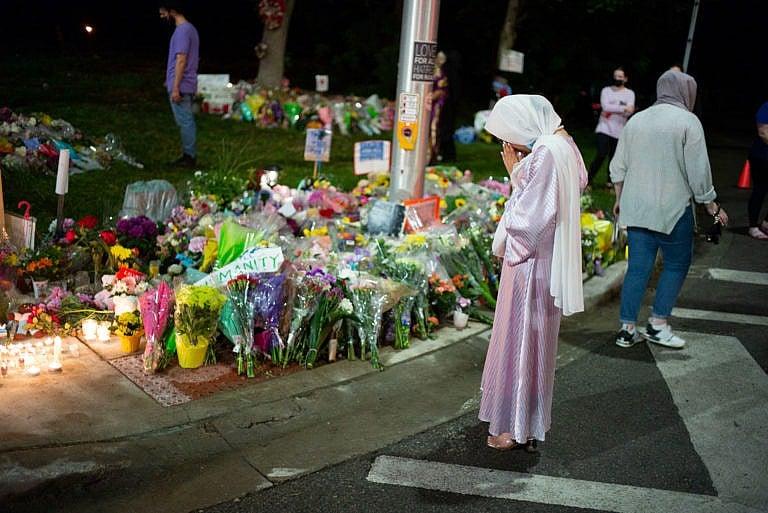
A woman stands at a makeshift memorial for the Afzaals in June of 2021, near the scene of the fatal collision. (Photographs by Ian Willms/PANOS Pictures)
Share
Early on a Sunday morning in June of 2021, Nathaniel Veltman told a co-worker he expected to have a rough day on the job. Veltman worked at an egg-processing plant in the town of Strathroy, Ontario, where his duties involved loading 20-pound crates of eggs onto skids, then loading the skids onto trucks, and he wasn’t feeling up to hours of manual labour. “Yeah, man, just so many shrooms last night,” he said. “I went to hell and I saw Satan.”
The co-worker was used to Veltman saying odd things and didn’t pay it much mind. “I was just like, ‘Yeah. Take it easy today, man, like maybe don’t go on any power equipment.’ ” Veltman chuckled and looked away. “Nothing really seemed that off to me,” the colleague says.
The next morning, Veltman, who was 20 at the time, wasn’t at work at all. Another person broke the news: “You’re probably never gonna see Nate ever again.”
Neither colleague is likely to, unless they attend Veltman’s murder trial next fall. After the Sunday shift, Veltman got into his Ram pickup, which he had recently equipped with a bull bar on the front bumper, and drove to London, Ontario, 35 kilometres away. A little past 8:30 p.m., he proceeded down Hyde Park Road, a broad suburban avenue on the edge of the city. Arriving at the intersection with South Carriage Road, he accelerated and jumped the curb. Police allege that he then intentionally struck down five members of the Afzaal family, who were out for an after-dinner stroll not far from their home.
Four of them died: 44-year-old Madiha, who was working on a Ph.D. in environmental engineering; her 46-year-old husband, Salman, a physiotherapist; their 15-year-old daughter, Yumnah, a Grade 9 student; and her 74-year-old grandmother, Talat Afzaal, an artist and teacher. Madiha and Salman’s nine-year-old son was badly hurt. Now an orphan, he is living with extended family members.
While bystanders rushed to tend to the Afzaals, Veltman drove to Cherryhill Village Mall, seven kilometres away, where he stopped in a parking lot. The front of his truck was damaged, streaked with blood. He wore a helmet and body armour, and a T-shirt bearing what some witnesses described as a cross, though that hasn’t been confirmed. He spoke to a shocked taxi driver, who was parked in the lot as well. He reportedly told the driver to call police, and that he’d killed someone.
The driver said Veltman was laughing.
***
In London, Ali Chahbar is the kind of local character who seems to know everyone. He grew up in the city, the son of the first Muslim to serve on city council, and he loves his hometown. Today he’s a lawyer who works with the Thames Valley District School Board. When he first heard of the incident on Hyde Park Road, he thought it was probably a tragic accident, and imagined it might have been caused by a drunk driver. Within hours, though, a London police officer he’d known for years paid him a visit. When his friend arrived in his civvies, visibly distraught, Chahbar knew something worse had happened. The two men sat in Chahbar’s backyard together—his friend wanted to tell Chahbar what he knew, or at least as much as he was permitted to share.
“He said that as they were getting preliminary information, it looked like it might have been a targeted thing,” Chahbar recalls. “He said, ‘I can’t share much with you at this point, but there was a family, and it looks like they might have been targeted because of their identity.’ ”
The Afzaals are Muslim, with roots in Pakistan. Some women in the family typically wore hijabs, which the driver would have seen from inside his truck. The news hit Chahbar hard. He didn’t know the name of the family yet, but he knew they likely attended the same mosque he did and walked the same streets in the community where he grew up. And he was, of course, aware of the mass shootings that had struck mosques and synagogues in recent years in Pittsburgh, Christchurch, Quebec City and elsewhere. But this was different. This was in his town. “I didn’t think that these types of things happened in London,” he says. “I took some measure of comfort from the fact that they took place in other parts of the world, other parts of the country. You know, it’s London.”
When Chahbar’s friend told him the news, that the suspect was a local guy, born and raised nearby, it shattered his sense of his city. “It took some time,” he says, “to come to grips with the fact that it happened here.”
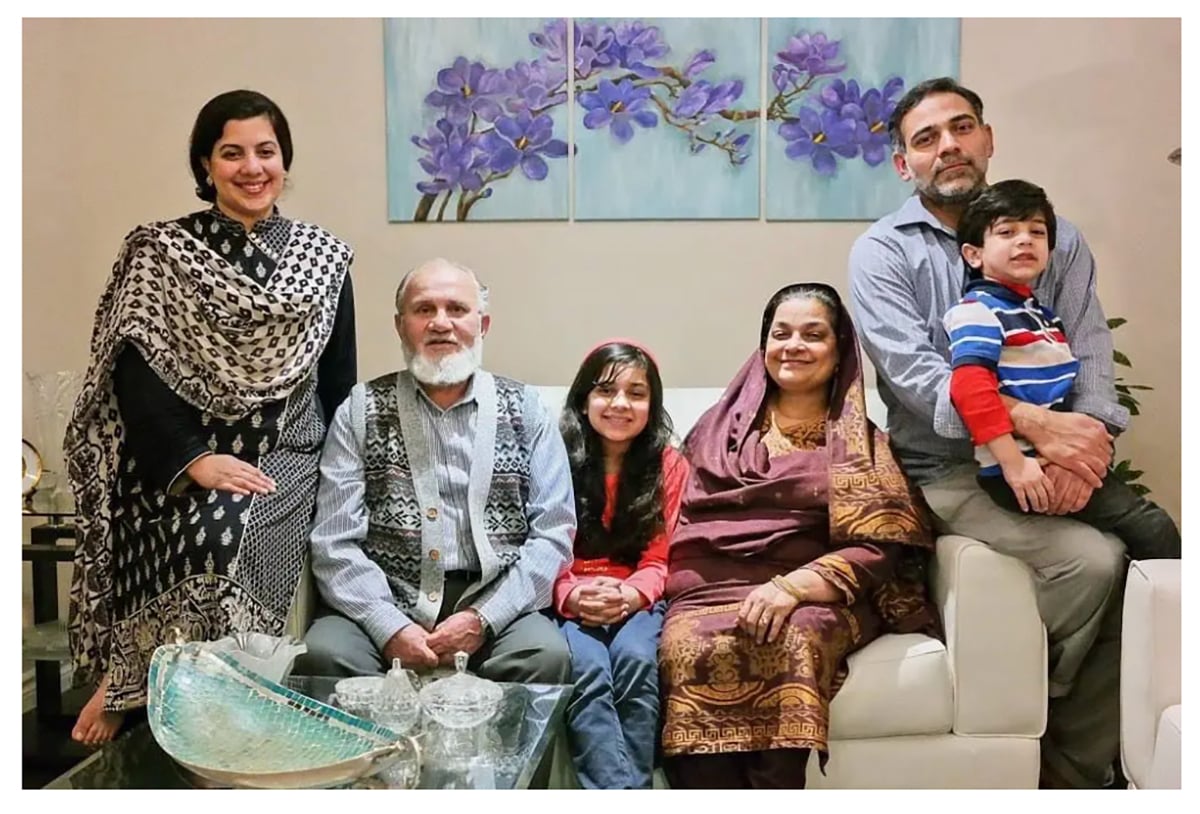
John Brennan and his wife, Charlene Pratt, heard the news the next day while listening to CBC Radio in their suburban Strathroy home. As the day went on, the news got worse. “You hear ‘four people,’ ” Brennan recalls. “And then the report clarifies a little bit more, you know, it’s a family. And then the next reporting cycle, suddenly it’s an Islamic family.”
When they heard Veltman’s name, it rang a bell. The Brennans are both retired, after long careers teaching at Strathroy District Collegiate Institute, a local high school. Brennan got out a yearbook. “Flip, flip, flip, and you go, ‘Oh my God, it’s Nathaniel Veltman.’ ” Brennan had coached Veltman on the cross-country running team, and taught both of his parents as well. After teaching 5,000 kids over 32 years, he had learned to spot troubled ones, but Veltman never registered. “No red flags,” he says.
As a student, Veltman had been easy to deal with, pleasant and friendly, and he seemed to enjoy the runs that Brennan organized in the woodlands around Strathroy. “The idea that a gentle, happy, 15-year-old boy who appears to be fine could morph in five years into an agitated, angry killer. This is where I start to wonder if there’s such a thing as an active force called evil in the universe.”
Brennan found himself asking a version of the same awful question that so many have asked, but which has remained unanswered since that truck mounted the curb and destroyed a family: could an apparently normal Canadian boy—who grew up with so many advantages in a prosperous, safe place—end up turning a truck into a weapon of mass murder?
The day after the incident, police laid four counts of first-degree murder and one count of attempted murder. Within days, they also laid terrorism charges, which suggests the Crown believes he was motivated by hatred.
In the meantime, there’s a mountain of evidence in court files pertaining to Veltman’s past—much of which I’m unable to report directly because a judge has sealed it under a publication ban, intended to give Veltman the best possible chance at a fair trial. Veltman’s parents did not respond to interview requests, and his legal representatives declined comment. But the clues available to us, and the evidence I was able to gather during months of reporting in Strathroy and London, point to a combination of psychological struggles and family crisis—and a hateful ideology that may have offered a sense of meaning and direction to a young man more deeply disturbed than anyone around him realized.
***
Mark Veltman and Alysia Bisset were married in the Bethel Baptist Church in Strathroy in April of 1997. Bisset was 19; Veltman, 23. They bought a comfortable four-bedroom ranch house on the outskirts of town, down a lane set back from the road. Behind the house, on a half-acre lot bordering farm fields, there is today an above-ground pool, a basketball pad, a fire pit and a little red barn. Mark worked at Lambton College, in an administrative job in the information technology department, where, tax records show, he was earning $92,000 a year by 2017.
On December 20, 2000, Nathaniel Veltman was born, along with a twin sister. Mark and Alysia had four more children, one every two years, until 2010. People who knew Nathaniel as a child describe a sweet-natured boy who loved animals. Alysia homeschooled the kids in what was, by all accounts, a deeply devout household in a part of small-town southwestern Ontario sometimes described as a Canadian Bible belt.
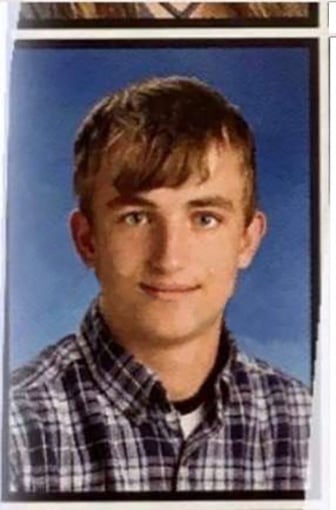
The family attended the same Baptist church in Strathroy where Mark and Alysia had wed. According to tax records, Mark Veltman donated to several evangelical missions, to an anti-abortion group and to Focus on the Family, a Colorado-based fundamentalist Christian organization that advocates for socially conservative policies. He also donated to the Peoples Church of Sarnia-Lambton, a literalist congregation that believes the Bible is the unerring, verbatim word of God. (One of its recent pastors studied at Liberty University, the private U.S. evangelical university co-founded by conservative Christian icon Jerry Falwell.)
In September of 2016, after a lifetime of homeschooling, Nathaniel Veltman enrolled in Strathroy District Collegiate Institute for his last two years of high school. Students who knew him there say he was a quiet and agreeable kid, though he had a reputation for eccentricity. One student said he seemed closed off, keeping mostly to himself. A female classmate said there was something off about him, that he was odd. He appears to have been studious, graduating from high school with a scholarship intended to help deserving Strathroy students afford post-secondary education. But at home, things were going badly. Mark and Alysia separated in February of 2016, and three months after Veltman enrolled at Strathroy Collegiate, his mother filed for divorce.
There are 570 pages in the divorce file at the courthouse in London. A judge has ordered significant sections redacted in response to a motion from Mark Veltman, but the information that is accessible indicates that the family had long been dealing with strife and conflict. It shows growing discord, with Alysia on one side and her oldest son and his father on the other. In the divorce application, Alysia alleged that Mark’s infidelity had ended the marriage, and repeatedly complained that her husband was working to turn the children against her. In a separation agreement reached in March of 2016, she won sole custody of the six children, with only supervised access for Mark—which he didn’t honour, often arranging to see them alone.
Veltman’s alleged crime and victims fit a terrible pattern that has occurred over and over, in killings in Norway, New Zealand, Quebec City and Buffalo.
The file also contains complaints by Alysia that Mark often sent messages to the children, especially Nathaniel, blaming her for the breakdown of the marriage. He texted another child, “I’m sorry I can’t see you tonight. I am not feeling well. Being on the receiving end of your mother’s relentless mission to utterly destroy me has that effect.”
Mark sent angry messages to Alysia, calling her in one “the most wicked human being” he had ever known. According to his mother, Nathaniel became difficult and argumentative, complaining about the child support his father had to pay. At times, the file says, Alysia locked herself in her bedroom to avoid her son. Nathaniel complained that his mother should quit homeschooling the other children so she could get a job and stop using his father’s money. He began objecting to long-standing household rules, encouraged by his father.
Alysia and Mark disagreed on parenting matters as well. “The ridiculous restrictions that you want to impose on Nate I don’t agree with and you know I never did,” he wrote to her in August of 2016, predicting that her approach to raising the children would create “six bitter children,” and leave Nathaniel “emasculated.” Two days later, in a second email, he wrote: “Your [sic] going to have a disaster on your hands. Clearly my input is meaningless. You need help.”
With his father’s encouragement, and against his mother’s wishes, Nathaniel moved out on his own. The file says that in January of 2017, a month after his 16th birthday, he withdrew from parental control, which teenagers in Ontario are permitted to do when they reach that age.
The troubled loners who commit mass murder for ideological or religious reasons frequently have difficult family lives, says Amarnath Amarasingam, an assistant professor of religion and political science at Queen’s University who specializes in terrorism and radicalization. “I don’t think I’ve ever seen a radicalized case,” he says, “where there wasn’t some sort of family turmoil.”
Amarasingam suggests that the painful divorce, and the struggle between Veltman’s parents, may have created what is known as a “cognitive opening,” into which new ideas and new ways of thinking might make inroads. That can take the form of an ideology, or an online community that seems to offer support and understanding, especially during times of heightened crisis.
Veltman may have found just such a community online. During their investigation, police were looking for evidence of the installation and use of a specialized browser for accessing the dark web, where extremists share hateful messages in chat rooms that leave no electronic trail. A search warrant seeking access to his laptop and other devices said that they appeared to contain “hate-related material and [were] relevant to the listed offences.”
Amarasingam also speculates that Veltman was inspired by other mass killings, such as those committed by white supremacists in Norway in 2011, in Quebec City in 2017, in New Zealand in 2019, and in Buffalo in 2022. All followed a similar, terrible pattern, and most of the killers subscribed to the “great replacement” theory. These terrorists see themselves as soldiers in a war to defend white culture against an invasion of brown-skinned invaders, orchestrated by a Jewish-led conspiracy to destroy white communities.
So far, there is no clear indication that Veltman left a manifesto, as these killers sometimes do, but his alleged crime and victims otherwise fit a pattern that has recurred with depressing regularity: troubled young men, radicalized online, committing mass murders and leaving terrible suffering in their wake.
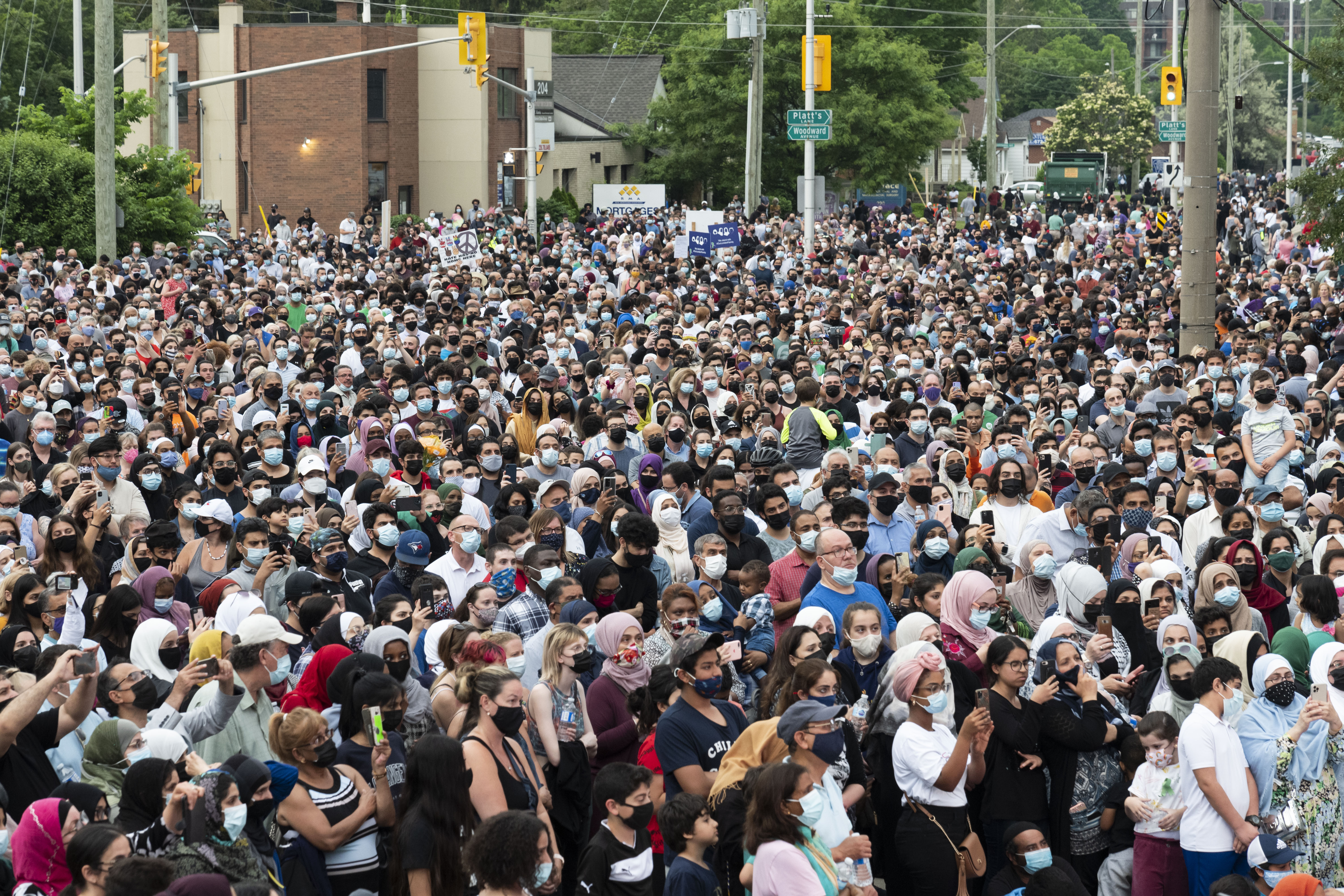
Thousands gather for a vigil at the London mosque the Afzaal family attended
***
In 2018, Veltman moved in with a friendin a basement apartment in Strathroy. By then, he was already working at the egg plant, mostly with other young men from the area.
His co-workers found him pleasant and helpful, always willing to finish others’ tasks so they could leave early. He made friends—after the attack, his co-workers tried to square their memories of a quirky but likable guy with the murderer he’s now alleged to be. Two employees, including one who was raised Muslim, told reporters that it must have been an accident, because Veltman never showed any sign of hatred. But once they started trading stories, a different picture took shape.
One person remembered him saying explicitly, viciously racist things about Black people, for instance. (The colleague says he replied with: “That’s really fucked up. Don’t say that, man.”) Veltman also talked about outlandish conspiracy theories, including the flat Earth theory, and the “lizard people” theory—an idea, often linked to anti-Semitism, that a group of reptilian humanoids is secretly controlling human affairs. He also often spoke about religion, and appeared to be struggling with his sexual desires. He would use his phone to look at pornography, become disgusted with himself and break the device. He lost several phones that way. “One time he actually tried to cut off his own testicles,” recalls a co-worker. “He had to go to the hospital.”
Veltman often joined other employees at a riverside pub for karaoke nights. Patrons remember him as shy, just another young guy drinking beer—but he would sometimes get extremely drunk. A friend recalls that one night he was “slamming drinks” before disappearing from the pub. The friend went outside to look for him but lost him in the rain. The next time the two men saw each other, Veltman said he had gone down to the trails along the Sydenham River. “He said he went in there,” says the friend, “and was fighting demons.”
Another night, Veltman drank too much and walked home. He later told a co-worker he was arrested for breaking into someone else’s house, thinking it was his own. In May of 2019, Strathroy police ticketed Veltman for public intoxication several blocks from his home, fining him $50. A police source says there were 13 “occurrences” mentioning Veltman in their files—minor incidents that didn’t result in police action. Things were about to get much worse.
***
That summer, Veltman moved out of the basement unit in Strathroy and rented a bachelor apartment in downtown London, near Covent Garden Market. In many ways it’s a charming neighbourhood, full of restaurants, pubs and shops, though nearby Dundas Street has a gritty edge, with open drug use and a large population of unhoused people frequenting nearby shelters and services. Veltman’s apartment was across the street from the downtown campus of Fanshawe College, where in September of 2018 he started studying architectural drafting.
Even between school and two jobs—one at the egg plant, the other a work placement at a local engineering company—Veltman found time to get involved in fringe political movements, such as anti-lockdown rallies. He volunteered for the Christian Heritage Party candidate in Elgin—Middlesex—London. Elections Canada records show he donated $20 to the campaign in October of 2019.
He’d called them out of the blue to volunteer, and another campaign volunteer, a farmer who spoke to me on the condition of anonymity, had him over for dinner with his family. (“You could just tell he hadn’t had a home-cooked meal for a while.”)
The farmer, a devout Christian, could see that Veltman needed guidance, and they stayed in touch after the campaign. At some point after his divorce, Veltman’s father had left the Christian church, which pained Veltman. The farmer, whose faith is rock-solid, was there to help. Veltman considered becoming a Mormon, and several times attended a London evangelical church whose congregation is made up mostly of first-generation immigrants from Africa and the Caribbean. He even exchanged text messages about scriptural matters with the Black pastor, who told me he had no idea that the young man harboured racist views.
As the pandemic continued, Veltman became much more isolated, the farmer says. He tried to arrange for the young man to live with a family he knew, but it didn’t work out. Veltman came over for dinner a few more times, and cancelled once, saying he was hungover. In November of 2020, Veltman wrote a long email to the farmer, detailing his psychological struggles.
“I have been blessed beyond belief, I have a place of my own, a car, a job to go back to, friends, school, and yet, I still have been losing my ability to even feel happy about life. I can never get enough of just laying in my bed … I feel so isolated from my family and my soul doesn’t even seem to understand the reason why I am on this earth. I feel full of resentment, anger, hatred, and rage against this world and some people. I got on my knees in the bathroom today and asked God to save me from myself … I told him that I knew my heart was filled with pride and asked him to take it away from me. Walking away I feel empowered and I feel like God is lifting me out of my mental torment. After praying I felt reminded that I was on this earth to serve God, and not myself.”
A friend recalls that one night he was “slamming drinks,” before disappearing from the pub. Veltman had gone down to the trails along the Sydenham River. “He said he went in there and was fighting demons.”
The farmer sent him emails encouraging him to listen to Christian music and establish better routines, although he doesn’t believe Veltman followed his advice. They planned to get together over Christmas that year, but Veltman cancelled because he was broke—he said his credit card was maxed out, and he couldn’t afford to buy windshield-washer fluid, so he couldn’t drive. In April, he dropped out of school. The next month, he bought a 2016 Ram from a dealership in London and had it fitted with a bull bar: a rigid barrier designed to push aside brush or animals, which also makes a vehicle more dangerous in a head-on collision, especially with pedestrians.
Veltman joked that he’d bought the bar to “ram the cops.” One of his friends chalked it up as one of Veltman’s strange jokes, but also wondered how he’d come up with the money for such an expensive truck. Used Rams of that vintage sell for $15,000 to $45,000. Given that Veltman had recently been too broke to buy windshield-washer fluid, it’s hard to imagine how he qualified for a big loan. One co-worker wonders if someone he met online helped.
Search warrants in Veltman’s case include documents pertaining to the purchase of the truck. Michael Arntfield, a University of Western Ontario criminology professor and former London police officer, suggests the purchase may well speak to preplanning, and the Crown will likely allege that Veltman acquired the large vehicle for the purposes of maximizing the casualties. “The defence is going to say he’s a blue-collar guy who wants a truck,” says Arntfield. “But clearly you can see the prosecution forming the case that he acquired this as a weapon.”
***
A few days after the Afzaals were struck down, Ali Chahbar—the lawyer with the love for all things London—got a call from the principal at Oakridge Secondary School, where 15-year-old Yumnah, the youngest of the slain Afzaals, had been attending Grade 9. At the beginning of the year, every student in her grade had been assigned to write a letter to their future selves outlining their aspirations. The principal had Yumnah’s handwritten letter, and he didn’t know what to do with it.
“You need a reservoir of hate,” says one of the Afzaals’ relatives. “You need to have a mode of transmission, and most times now it’s the internet. And you need to have a vulnerable individual. You need all three to exist before someone actually commits a crime.”
“Mom’s gone. Dad’s gone. Grandma’s gone,” the principal said to Chahbar. He hoped that because Chahbar was so well connected in the city, particularly in the Muslim community, he may be able to find a home for the letter. “I have this thing I think is of value,” he said. “I think it’s a keepsake, and you’re the only person I know who might have a potential connection to somebody.” Chahbar agreed to see if he could get the letter to the family. “It fucking wrecked me, man,” he says of its contents. “This girl in there, she was just snuffed out.”
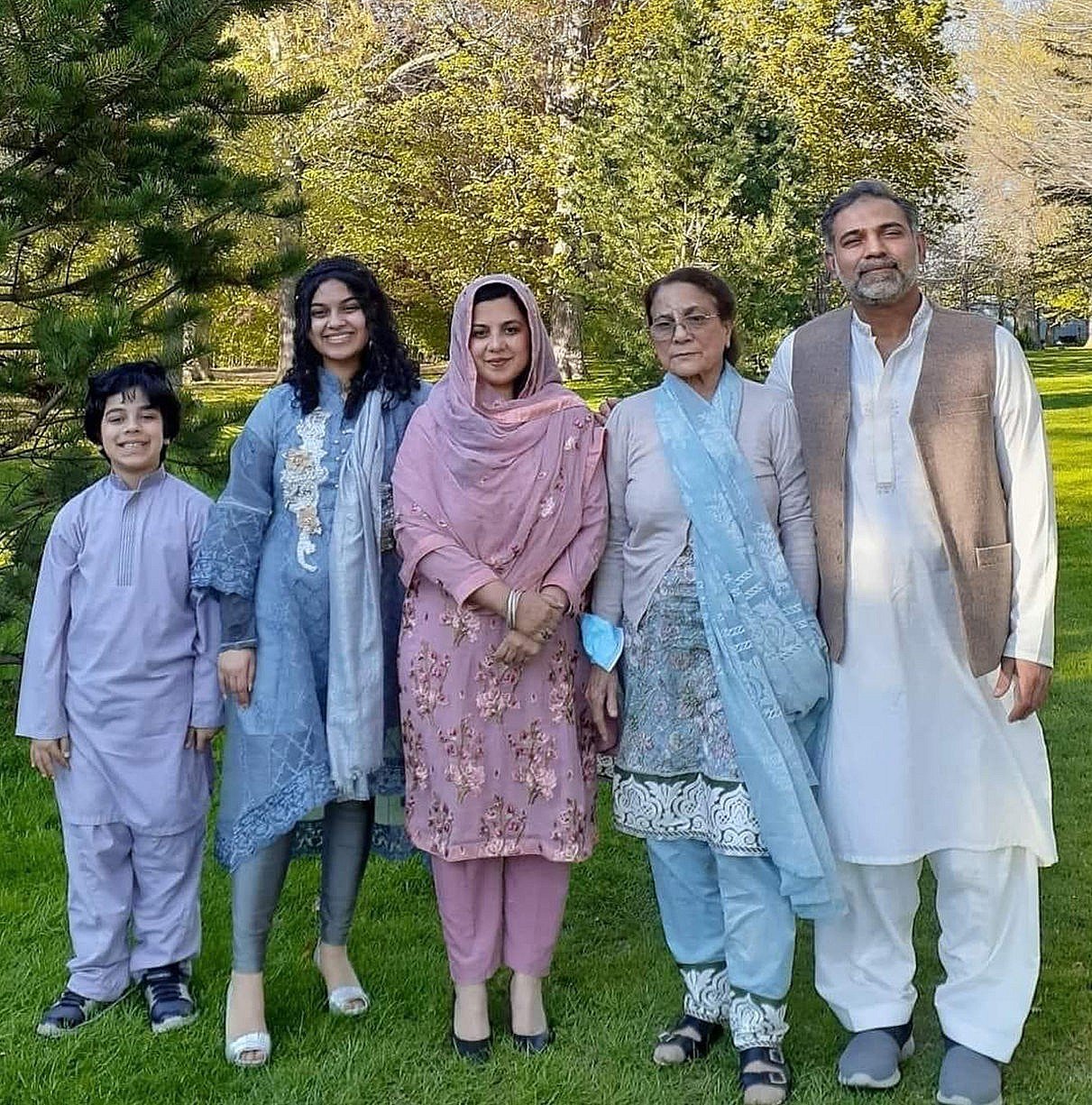
Chahbar reached out to community members, who found names and addresses of surviving relatives—one of whom lived in the same neighbourhood as him. Chahbar walked down the street, letter in hand, and knocked on the door. Yumnah’s great-aunt answered. Chahbar explained who he was and what he was doing. He handed her the letter and she read it on the spot. The woman, whose two eldest children were close to Yumnah, was overcome; she couldn’t finish the letter until later, when her family had gathered with her. This is what it said:
“Dear me,
Coming into high school, there was a lot that I was expecting. There was also so much I was completely unsure about. I knew which classes I had, but I didn’t know with whom. I knew COVID-19 was going to change things, but I didn’t know how.”
As she got to know her school, however, she became more confident: “I’ve been successful in working my way towards the goals that I have set for myself. I would describe myself as an ambitious person, so the eagerness and dedication I put into my goals is what drives me to reach them. Although it sounds heavily generic, I have learned that there isn’t anything that isn’t within our grasp.”
She describes her passion for art, her pleasure in painting a mural in elementary school, her love of R&B and hip hop, and her favourite classes (English and history). And she spoke of her devotion to family.
“I would describe myself as an introverted person that has a small circle. My family consists of me, my brother and my parents. I’m close with my cousins, too, and I enjoy getting on their nerves and hanging out with them. Overall, I’m someone that values people, their time and the things I’m passionate about.”
Yumnah’s great-uncle, a London doctor who asked us not to use his name out of concern for his safety, says the letter from Yumnah is “very precious to us.” He and Yumnah’s great-aunt keep it in a binder with her artwork, each page covered in plastic film. They treasure their memories of the optimistic, hopeful, energetic girl who has been taken from them.
In Islam, the formal grieving period is three days. “But you can grieve your whole life,” says Yumnah’s great-uncle. “And we will.”
***
In the London courthouse, there are hundreds of pages of search warrantsfrom the London Police Service’s investigation into Veltman, including documents for warrants to search his truck, apartment and electronic devices.
There is nothing in the file to definitively indicate that Veltman had the active assistance of far-right groups, or anyone else. But as the terror charges against him indicate, police believe he was motivated by hate, given his suspected activity on the dark web and other material found on his laptop.
After the attack, Veltman was locked up in London’s Elgin-Middlesex Detention Centre, where he’s been ever since, and where he turned 21 last December. It is a 450-bed maximum-security jail, and a rough place—there have been 19 inmate deaths there since 2009. Veltman has appeared at several hearings by video linkup from jail, looking young and frail in an orange prison-issued T-shirt and blue face mask.
When Veltman stands trial, he will be represented by Christopher Hicks, a veteran Toronto defence attorney who has handled many high-profile criminal cases, representing bikers and killers. He often does legal analysis on CTV News, breaking down arguments in a concise, matter-of-fact manner, and has argued more than a dozen times before the Supreme Court of Canada. In June, Hicks successfully brought a motion seeking a change of venue, convincing Superior Court Justice Renee Pomerance that Veltman should be tried outside of London. The reasons for the decision are under a publication ban, but such rulings are sometimes made when intense media coverage of a crime, or local reputation, could make it hard for a suspect to get a fair trial.
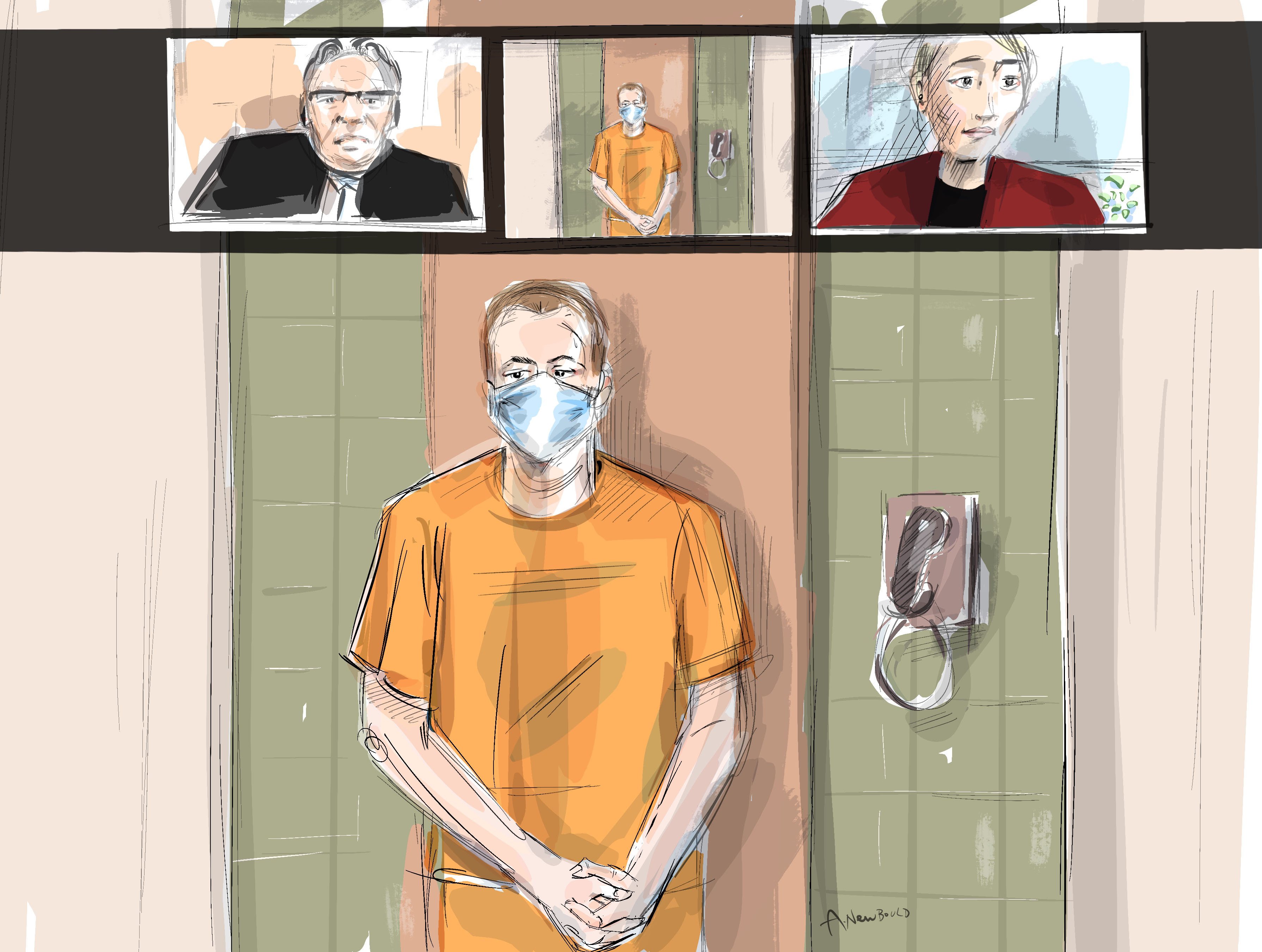
If Hicks seeks a not-guilty plea on the basis that Veltman was mentally ill, he will have to convince Justice Pomerance that the young man didn’t understand his actions. Defence lawyers for the man who drove a rented van onto a Toronto sidewalk in 2018, killing 11 people (including one who died in 2021, after more than three years in hospital), tried a similar argument, which was rejected by the judge in that case.
Michael Spratt is an Ottawa defence lawyer, a criminal law specialist and a frequent legal commentator (he is not involved in this case). “Running that sort of defence can be an uphill battle for an accused,” says Spratt. “It’s Hicks’s onus to show that Veltman suffered from a psychiatric illness that prevented him from understanding the nature and consequences of actions. That he was not able, essentially, to tell right from wrong.”
***
The day after the attack, Ali Chahbar went to the place where the Ram with the bull bar struck the Afzaal family. Londoners had gathered, many bearing flowers to express their sorrow. Chahbar recalls a white woman, probably in her 60s, who came with a bouquet. “She was crying and she started to apologize to me,” he says. “And before I could even say something to her, another random Londoner who was at the scene gave her a hug, and he started to cry as well. And so we have three strangers on the corner.” Chahbar chokes up a year later as he recalls the scene.
Although Londoners rallied immediately and forcefully around Muslims in the community, the attack on the Afzaals has made many fearful. When Chahbar enters his mosque to worship on Fridays, the thought of something terrible happening sometimes enters his mind. He thinks about the possibility of being carried out on a stretcher. Yet he doesn’t stay away. “It’s almost an act of defiance now to say, ‘You’re not going to scare us. If your objective, Veltman, was to instill fear in the hearts and minds of the community, you failed miserably.’ ”
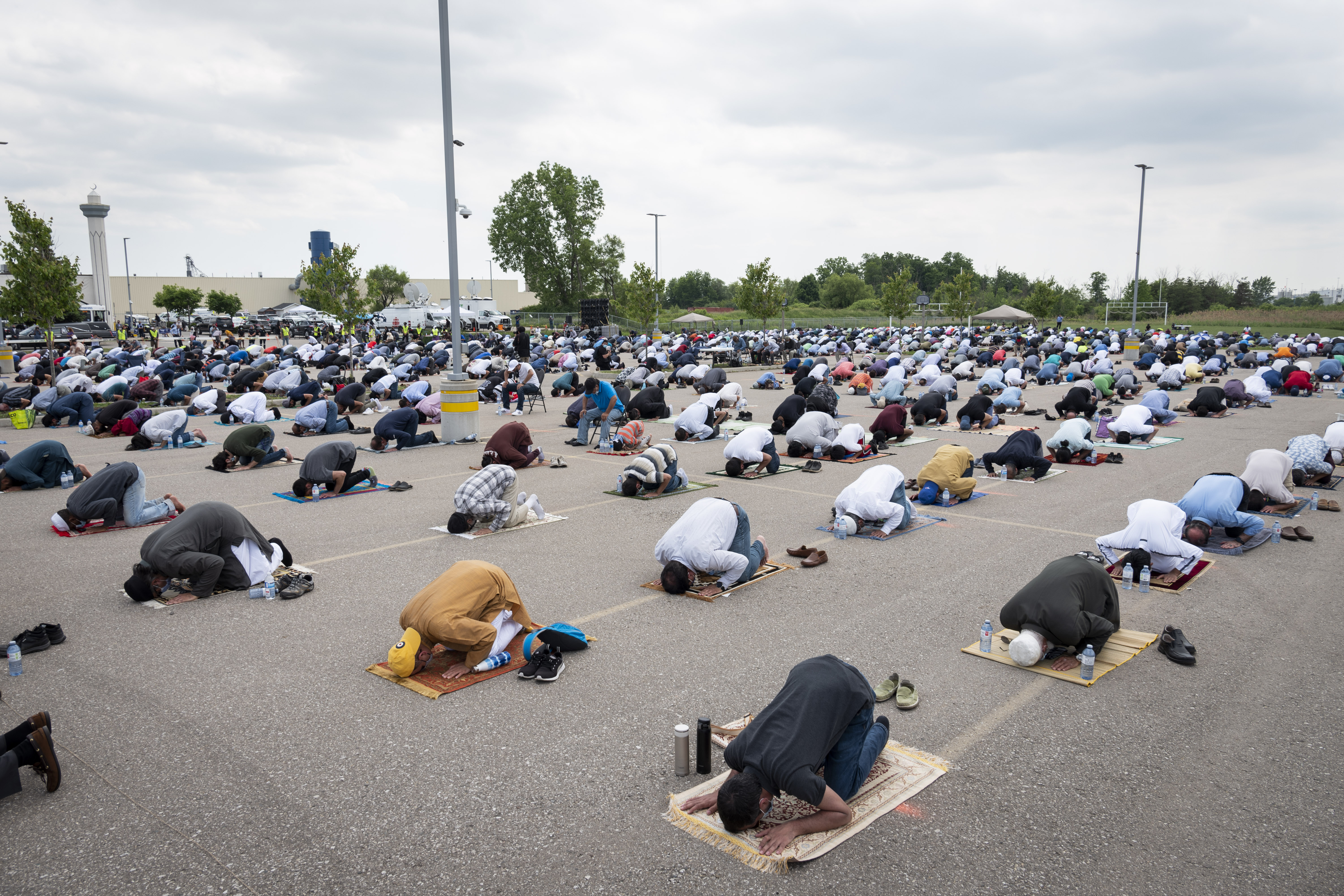
Mourners pray during the public funeral for the Afzaal family in June of 2021
In fact, he says, the attack has had the opposite effect—it’s brought people together. On the anniversary of the killing, thousands of Londoners gathered at the sports field next to the school that Yumnah attended. Her cousin spoke, and a friend, as did religious leaders from many faiths, plus Mayor Ed Holder and Justin Trudeau, who later walked with young Muslims at the head of a march opposing Islamophobia.
Relatives of the Afzaals have tried to stay out of the public eye, though they have supported scholarships in Madiha and Salman’s names, and there are plans in the works for one to honour Talat, who was a talented artist.
Yumnah’s great-aunt, who received the letter from Ali Chahbar, says the Afzaals were extremely private, and their relatives have tried to respect that privacy even now. “After the attack, people didn’t know their names,” she says. “But when they saw the pictures, they said, ‘I know that person, I had met them at the mosque,’ or ‘he had helped me with such and such.’”
Shaukat Rizvi, a relative of the Afzaals, said the killing has deepened the understanding between different communities. But he also suspects that anti-Muslim feeling may be growing in the area as the Muslim population grows. London police reported a recent increase in hate crimes in 2021, with Muslims among the most targeted groups.
Strathroy still looks much like the place it was when the Veltmans got married, and like countless other small Canadian communities. It has a small, historic downtown, full of handsome brick buildings that date from the era when the railway was the main source of economic activity. There’s a newer commercial area on the outskirts, packed with chain restaurants and big-box stores.
But like the larger city to the east, its population is changing. Long dominated by white English Canadians, Strathroy experienced a postwar wave of Dutch immigration, and a later wave of Portuguese immigration. Today, its proximity to London is driving more rapid population growth, with thousands of new residents in the past several years. Among them is a small but growing Muslim community.
Brennan, who coached Veltman in high school and sits on the Strathroy-Caradoc municipal council, says most people in town are welcoming—although there have always been those who resist change. “People feel threatened,” he says. “We’re talking about a very small minority of people, but that’s all it takes. It only takes one person out of a hundred.”
Yumnah’s great-uncle agrees. “You just need to find the most vulnerable individual,” he says. “The weakest link is going to go down a rabbit hole. It just takes one.” A doctor by profession, he sees this kind of crime as a public-health problem that can only be tackled systemically, as if stamping out a virus. “To do something like this, you need to have a reservoir of hate,” he says. “You need to have a mode of transmission, and most times now it’s the internet. And you need to have a vulnerable individual. You need all three to exist before someone commits a crime.”
The farmer who tried to help Veltman thinks about it in more personal terms—he wishes he had been there, and is haunted by what-ifs. “I don’t know if I would’ve had the courage to do it,” he says. “But I wish I could have stepped in front of the Afzaal family. Because that might have stopped him. Because he probably wouldn’t have run me over. That’s still in my mind.”
This article appears in print in the November 2022 issue of Maclean’s magazine. Buy the issue for $8.99 or better yet, subscribe to the monthly print magazine for just $29.99.
